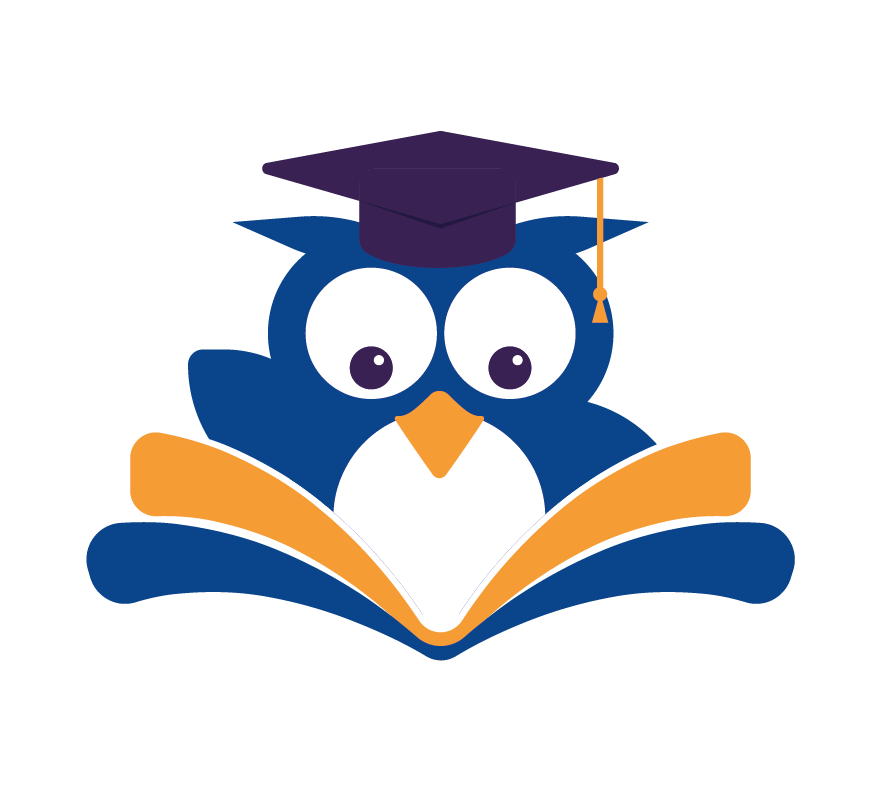We all want to improve our skills quickly and efficiently. Whether you’re a student or a lifelong learner, getting new skills can seem tough. But what if you could learn faster and better?
Experts like Pat Flynn and Jeffrey A. Greene say the secret to mastering any skill is using the right strategies. In this article, we’ll look at the tips and techniques to help you improve skill acquisition and reach your goals.
Key Takeaways
- Understand your learning style to optimize skill acquisition
- Set clear goals and create a practice schedule
- Break down complex skills into smaller, manageable chunks
- Use active recall and spaced repetition to reinforce learning
- Stay motivated with a growth mindset and positive self-talk
The Science Behind Rapid Skill Acquisition
Learning new skills quickly is thanks to our brain’s amazing ability to change. When we learn, our brain makes new paths for information to flow. This is key for speeding up learning.
How Your Brain Forms New Neural Pathways
Practicing a new skill makes your brain connect neurons in new ways. This process is always changing, adapting to what you experience. The more you practice, the stronger these connections get, boosting your skill growth.
The Neuroplasticity Advantage for Adult Learners
Neuroplasticity, or the brain’s ability to change, is crucial for adults learning. Adults may have more established brain paths, but they can still speed up learning. They use their existing knowledge to their advantage.
Myelin and Skill Development
| Aspect | Description | Impact on Learning |
|---|---|---|
| Myelin | A fatty substance that insulates neural pathways | Speeds up signal transmission, enhancing skill execution |
| Practice | Repeated exercise of a skill | Strengthens neural connections, improving performance |
| Neuroplasticity | Brain’s ability to reorganize itself | Allows for adaptation and learning throughout life |
Knowing how our brains work helps us improve our skills and reach our goals faster. The secret is to use our brain’s natural talents, like neuroplasticity and myelination, to speed up learning.
Why Traditional Learning Methods Often Fail
Many of us have tried to learn a new skill but felt stuck. This is often because traditional learning methods don’t work well. They don’t consider how our brains learn, making learning slow.
Common Pitfalls in Skill Development
There are several reasons why learning new skills can be tough. These include:
- Lack of clear goals and focus
- Insufficient feedback mechanisms
- Failure to break down complex skills into manageable parts
- Ineffective practice strategies
Knowing these pitfalls helps us change our learning ways. This way, we can learn new skills quickly.
The Myth of “Natural Talent” vs. Deliberate Effort
Some think that being naturally talented is key to learning. But, research shows that deliberate effort is more important than talent.
Let’s look at how these two compare:
| Aspect | Natural Talent | Deliberate Effort |
|---|---|---|
| Learning Speed | Fast initial progress | Consistent improvement over time |
| Practice Approach | Often casual and unstructured | Structured and focused practice |
| Long-term Success | May plateau early | Can lead to sustained progress and mastery |
The 10,000-Hour Rule Reconsidered
The idea that 10,000 hours of practice is needed to master a skill is popular. But, it’s the quality of practice that matters more than the amount.
To learn quickly, focus on practice that is challenging and well-structured.
By understanding the flaws in traditional learning, we can learn new skills more efficiently. This approach helps us learn faster and better.
The 80/20 Rule: Focus on What Matters Most
You don’t need to know everything to be good at something. The 80/20 rule helps you focus on what really matters. It shows that 80% of results come from 20% of efforts. This means focusing on the most critical parts of a skill to get the best results.
Identifying the Vital Few Components of Any Skill
To use the 80/20 rule, you must identify the vital few components of the skill you’re learning. Analyze the skill to find out which parts are most important. Pat Flynn’s method teaches focusing on these key parts. This way, you can expedite your expertise attainment by focusing on what truly matters.
Eliminating Time-Wasting Activities from Your Learning
After finding the critical components, it’s key to eliminate time-wasting activities. Cut out practices or study materials that don’t help much. By streamlining your learning, you can boost your skill retention and progress faster.
Practical Examples Across Different Skill Domains
In language learning, focusing on common vocabulary and grammar rules is more effective. In programming, learning a few key languages or frameworks is a solid start.
By applying the 80/20 rule, you can make your learning journey more efficient. This leads to faster mastery of any skill.
How to Master Any Skill Faster: The Framework
To quickly learn any skill, you need a clear plan. This framework helps you master skills fast and well.
Step 1: Deconstruction – Breaking Down the Skill
The first step is to deconstruct the skill into basic parts. This makes it easier to know what to focus on. For instance, learning a new language means breaking it down into phrases, grammar, and vocabulary.
Step 2: Selection – Choosing What to Focus On
After breaking down the skill, pick the most important parts to focus on. This means finding the key elements that will give you the most benefit. By focusing on these, you can improve skill acquisition by concentrating on what’s most important.
Step 3: Sequencing – Ordering Your Learning
Next, sequence your learning by ordering your practice sessions. This means arranging your practice to build on what you already know. Sequencing helps solidify what you’ve learned and introduces new ideas.
Step 4: Stakes – Creating Accountability
The last step is to create stakes to keep yourself on track. This could be sharing your goals with a friend or joining a study group. It’s crucial for staying motivated and tracking your progress.
By using this framework, you can fast-track your skill acquisition and become a master faster. Remember, consistency, persistence, and patience are key to your learning journey.
Deliberate Practice: Quality Over Quantity
Mastering a new skill isn’t about how long you practice. It’s about how well you practice. Deliberate practice is the secret to learning faster.
To improve your skills, focus on the quality of your practice. Set clear goals, stay focused, and get feedback right away.
Designing Effective Practice Sessions
Good practice targets specific skills to improve. Break down the skill into smaller parts. Focus on the toughest parts first.
The Role of Immediate Feedback in Accelerated Learning
Getting feedback right away is key to learning. It helps fix mistakes and build good habits. Jeffrey A. Greene agrees it’s vital.
When practicing alone, use tools like recording yourself or apps for instant feedback. Regular self-checks also help.
By using these methods, you’ll speed up your learning and boost your skills a lot.
The Power of Spaced Repetition in Skill Mastery
Spaced repetition is a key to boosting skill retention. It involves reviewing material at longer intervals to lock it in your memory. This method greatly improves your ability to recall and perform skills.
Optimizing Your Learning Schedule with Science
Understanding the science behind spaced repetition is crucial. Our brains forget information over time, but spaced repetition reviews it just before we forget. This optimal timing strengthens neural connections, making recall easier.
| Day | Review Material | Interval |
|---|---|---|
| 1 | Introduction to Spaced Repetition | – |
| 3 | Benefits of Spaced Repetition | 2 days |
| 7 | Implementing Spaced Repetition | 4 days |
Digital Tools to Implement Spaced Repetition
Digital tools make it easy to use spaced repetition. Apps like Anki and Quizlet are popular choices.
Creating Your Own Spaced Repetition System
To set up your own system, pick the material you want to review. Use a planner or app to schedule reviews at longer intervals. For speedy skill learning, stay consistent and adjust intervals as needed.

Leveraging the “Flow State” for Rapid Progress
When you’re in the zone, learning is easy and effective. Let’s explore how to get into that state. The “flow state” is a state of complete focus and immersion. Your skills and challenges are perfectly balanced.
Mihaly Csikszentmihalyi, the pioneer of flow state research, once said,
“The best moments in our lives are not the passive, receptive, relaxing times—though such experiences can also be enjoyable, if we have worked hard to attain them. The best moments usually occur when a person’s body or mind is stretched to its limits in a voluntary effort to accomplish something difficult and worthwhile.”
Creating Optimal Learning Conditions
To achieve a flow state, you need to create the right conditions. This means eliminating distractions, setting clear goals, and having a conducive learning environment. Minimize interruptions by turning off notifications and finding a quiet workspace. It’s also crucial to have the necessary resources and tools at hand to avoid unnecessary breaks in your learning flow.
Balancing Challenge and Skill Level
A key element of the flow state is the balance between the challenge of the task and your skill level. If the task is too easy, you’ll get bored; if it’s too hard, you’ll get frustrated. The sweet spot is where the challenge is high but manageable with your current skills. To maintain this balance, regularly assess your progress and adjust the difficulty level of your learning tasks accordingly.
Recognizing and Extending Flow Experiences
Being aware of when you’re in a flow state can help you prolong it. Pay attention to the conditions that led to this state and try to replicate them. Some signs of being in flow include losing track of time, having a high level of focus, and feeling a sense of control over the task. To extend your flow experiences, take regular breaks to recharge and maintain a consistent practice schedule.
By understanding and leveraging the flow state, you can significantly expedite your expertise attainment and achieve quick skill mastery. It’s about creating the right conditions, balancing challenge and skill, and being mindful of your flow experiences.
Mental Models: Shortcuts to Expertise
Mental models are shortcuts to becoming an expert in any field. They are frameworks that experts use to understand complex systems. By using these models, you can improve your skills quickly.
Borrowing Frameworks from Experts
One way to quickly improve is by using mental models from experts. For example, Warren Buffett uses the “Margin of Safety” model for investing. This helps you make better decisions and avoid mistakes.
Cross-Disciplinary Learning Approaches
Cross-disciplinary learning means applying principles from one field to another. For instance, “entropy” from physics can help understand disorder in other areas. This broadens your knowledge and helps you see things from different angles.
Building Your Mental Models Library
To start your mental models library, identify key concepts in your field. Then, see how they connect. Use the table below to organize your mental models:
| Mental Model | Description | Application |
|---|---|---|
| Margin of Safety | Buffer against errors or unforeseen events | Investment decisions, risk management |
| Second-Order Thinking | Considering the consequences of your actions | Strategic planning, decision-making |
| Feedback Loops | Processes that provide insights into performance | Skill development, system optimization |
By building and using mental models, you can enhance your skill development and become an expert faster.
Overcoming Plateaus and Learning Barriers
Hitting a plateau can be frustrating. It’s a normal part of learning. We’ve all felt stuck, trying hard but not improving.
Recognizing When You’re Stuck
The first step is to know you’re stuck. Ask yourself: Are you making progress? Feeling challenged? If not, it’s time to change your approach. Self-reflection is key to finding what’s holding you back.
Strategies to Break Through Plateaus
Once you know you’re stuck, it’s time to try something new. Change your practice routine or find new resources. Sometimes, a new view is all you need to boost skill retention and keep improving.
When to Seek Expert Intervention
If you’re still stuck, it’s time to get expert help. They can give you personalized feedback and guidance. Don’t be afraid to ask for help – it shows strength, not weakness!

The Role of Rest and Recovery in Skill Development
Learning new skills isn’t just about practicing. Rest and recovery are just as important. They help your brain recharge and improve your skills.
Why Sleep Is Critical for Learning New Skills
Sleep is key for memory consolidation. It moves information from short-term to long-term storage. Your brain strengthens connections during sleep, making learning easier. Adequate sleep is essential for optimal learning and memory formation.
Strategic Breaks to Enhance Retention
Regular breaks help you remember information better. They give your brain time to process what you’ve learned. Strategic breaks can be as simple as taking a short walk or practicing deep breathing exercises.
Designing an Optimal Rest-to-Practice Ratio
Finding the right balance between practice and rest is crucial. Aim for 45-60 minutes of practice followed by a 10-15 minute break. Experiment to find what works best for you. Consider these tips:
- Listen to your body and take breaks when needed
- Prioritize sleep and aim for 7-9 hours per night
- Use relaxation techniques, such as meditation or yoga, to enhance recovery
Technology and Tools to Accelerate Your Learning
Using technology is crucial for quick skill learning. Today, many tools and apps help improve your learning. This makes quick skill mastery easier than before.
Apps and Software for Different Skill Categories
There’s an app for every skill you want to learn. For language skills, Duolingo offers fun lessons. For coding, Codecademy has practical exercises. Finding the right tool is the first step to speedy skill learning.
How to Use AI as Your Learning Assistant
Artificial Intelligence (AI) can make learning personal. It gives you tailored advice and feedback. AI tools help spot your weak spots and suggest more learning, boosting your fast-track skill acquisition.
Creating a Digital Learning Environment
Creating a good digital learning space is key. Choose the right hardware and software for your goals. This prepares you for effective learning and quick skill mastery.
By using these technologies, you can learn faster and reach your goals sooner.
Conclusion: Your Roadmap to Faster Skill Mastery
We’ve looked at ways to master any skill quickly. By using the tips from this article, you can learn faster and better. This will help you get good at anything you want to do.
Remember, focused learning is crucial. Break down the skill into key parts and learn them in order. This makes a good plan for learning. Practice carefully, get feedback right away, and use spaced repetition to learn fast.
Technology, like apps and AI tools, can also help you learn. Plus, using mental models and creating the best learning environment keeps you motivated. This helps you get past learning hurdles.
Now, it’s your turn to try these tips. First, pick the skills you want to learn. Then, make a plan just for you. With hard work and the right methods, you can reach your learning goals and master any skill quickly.

